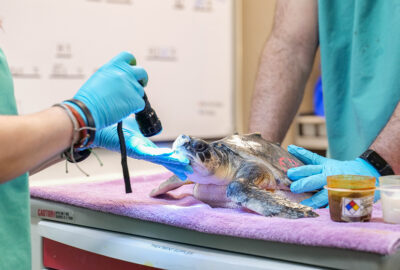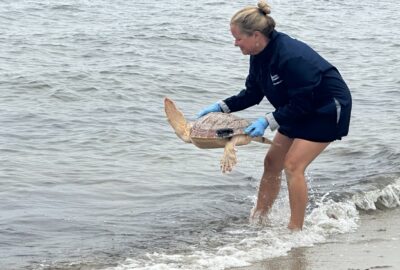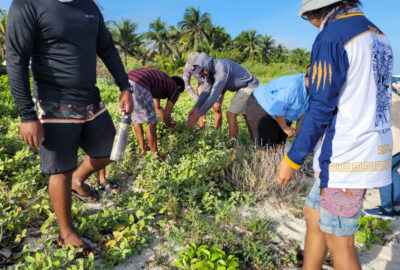Munchkin's Journey: Frequently Asked Questions
Since Munchkin, the giant rescued loggerhead sea turtle, was released off Cape Cod this July, we’ve gotten lots of questions from her fans
By New England Aquarium on Wednesday, October 02, 2019

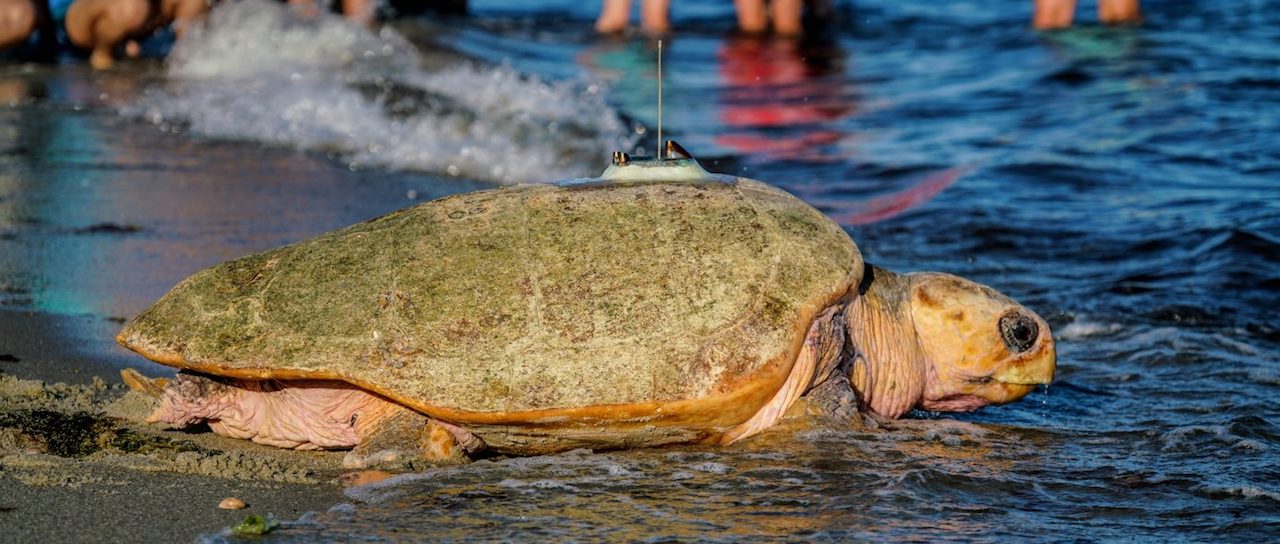
Dr. Kara Dodge, sea turtle ecologist at the Aquarium’s Anderson Cabot Center for Ocean Life, answers our most frequently asked questions.
Did we miss your question? Keep them coming! And remember to keep following along on Munchkin’s Journey!
Does wearing a tag put Munchkin at risk since people know where she is?
Although location data from our GPS tag is highly accurate (within about 30 meters), it would still be very difficult to locate Munchkin at sea since tag transmissions are intermittent and she is always on the move. Loggerheads are constantly diving, so the probability of encountering her at the surface is very small. As researchers, we find this cryptic behavior frustrating since we sometimes need to relocate tagged turtles! On the other hand, tag data could actually benefit turtles since the tags can help identify “high-use” areas that can be relayed to fishermen or others in real time and help them avoid unwanted interactions with protected species.
Munchkin seems to be hanging out in one particular area. What is she doing?
Munchkin has honed in on the mid-shelf area off New Jersey, a prime loggerhead foraging habitat based on other tagging studies in the area. We can see small, clock-wise loops in her horizontal track that suggests she might be taking advantage of small-scale surface eddies. She is also making long dives to the bottom, where she is likely feeding on benthic prey such as crabs and other invertebrates.
What’s wrong with the other turtles on the map?
For a few months, Munchkin shared her tracking map with three other released turtles— Sticky Buns, Apple Turnover, and Canadian Maple Bacon. After awhile, their trackers stopped transmitting, making it look like they were smack-dab in the middle of a New York City vacation! Don’t worry, these turtles were not in the middle of Manhattan, no matter what the map said. So what happened? The tags on these three turtles are not GPS units, so they are inherently less precise. Turtles that spend time close to the coast may appear on land since there is more error in locations calculated from the Argos satellite system. Their tags also appear to be “biofouled,” which means there is some natural growth (algae, barnacles) covering their wet/dry sensors. There’s a possibility the tags will start transmitting again if the turtles move into colder water, but no guarantee. Fortunately, our girl Munchkin is spending plenty of time in cold, bottom water and her tag isn’t having any issues with biofouling.
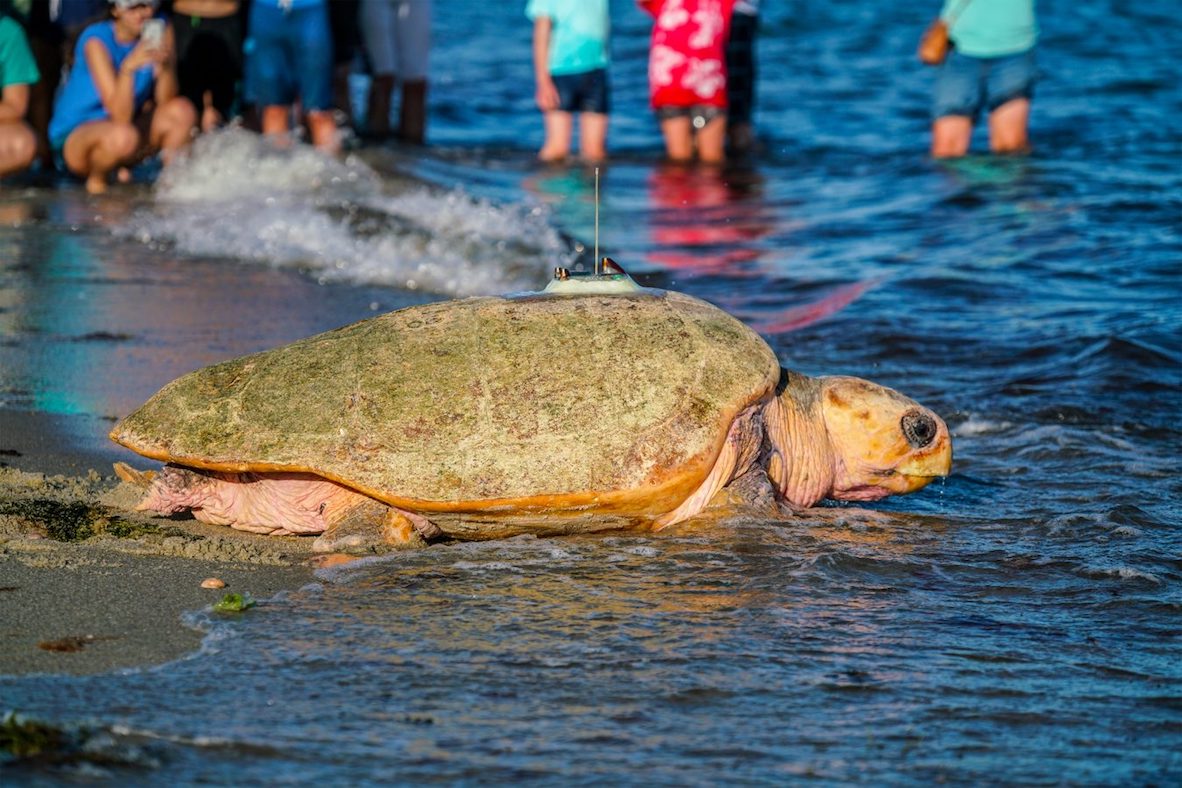
Does the tag bother her? Or get in her way?
Any time you attach something to a wild animal, you have the potential to impact its behavior. When we attach tags to sea turtles, we try to minimize the footprint of the tag and use a hydrodynamic design to reduce impact to the turtle’s natural behavior. The combined weight of her tag and attachment materials is less than 1% of Munchkin’s body mass (best practices for sea turtles are 5% or less). Loggerheads are known for carrying heavy barnacle loads and other biota on their shells, and the temporary addition of this tag to her shell is unlikely to bother her and won’t impede her ability to swim and dive. We expect Munchkin to shed her tag within about one year.

